
The motorcycling industry is abuzz with news that Triumph is set to release a range of dirt bikes. Real ones. Not Bonneville-based gravel road blasters, but ridgy-didge motocross and enduro bikes.
Republished from July 2021
The company has reportedly recruited American motocross and supercross legend Ricky Carmichael and Spanish enduro hero Ivan Cervantes to help development (and marketing, hey…) of the new bikes. There’s not yet any photos or specifications; the company is only saying that further details will be revealed “in coming months”.
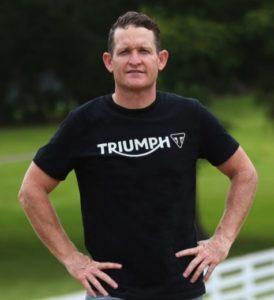
We’ve not heard of Ivan Cervantes, to be honest, but we’re not enduro people so that’s not a surprise. But we certainly remember Ricky Carmichael from the early 2000s. As we remember, Ricky had at least a couple of seasons in the US where no-one could go anywhere near him and he won every single race he entered. Some folks consider him the greatest of all time, but that’s because they’re too young to remember Roger DeCoster.
Anyways, it turns out Ricky is still only 41 years old (still a kid, what?) and has a net worth of $25m. In case anyone cares …
So, with no pics or specs to share, we thought we’d recycle this story from 2019 when we rode the nearest thing Triumph has to a dirt bike.
Re-posted from April 2019
ROAD & TRAIL TEST
Photos by Jonathan Beal and Steve Bell
WHEN it came down to it, we had one over-riding question about Triumph’s new Scrambler 1200XE: Is this a dirt bike, or just a road bike dressed up in very expensive retro clothes and jewellery to look like a dirt bike?
Because when we first laid eyes on it, we weren’t sure what to think — a huge high-tech road bike motor and a top-spec Brembo disc brake system, mixed with long-travel Ohlins/Showa suspension and chunky tyres from an adventure bike, then dressed with seat, tank and lighting styles straight from the 1980s, and finally topped off with an exhaust system that would have looked at home on a 1965 Triumph TR6 desert sled.
Having ridden several of the big Bonneville-based Triumphs over the past couple of years — including the very likeable but tarmac-only 900 Street Scrambler (story here) — we were prepared to find the new 1200 to be a Ritzy styling exercise rather than a genuine attempt to build a bike capable of going bush. And Ritzy it is. With a base price north of $21k plus on-roads — and our test bike was optioned up further — it’s an expensive bit of gear.
Certainly the Scrambler’s styling cues suggested the Triumph Marketing Department had given the Aesthetics Branch a lot of say in the development of this bike. The high-rise exhaust system, in particular, looks way-cool — but it’s inescapably a warm-to-hot pain in the leg. A low-slung exhaust would have been eminently more sensible on a bike that purports to be off-road friendly and therefore demands to be capable of prolonged up-on-the-footpegs riding. But the bike is called a Scrambler and, as any Triumph tragic will tell you, if it ain’t got a freakin’ high rise exhaust it ain’t a freakin’ scrambler …
So how does it stack up — really?
Triumph Australia tossed us the keys (well, the fob thingy) to an optioned-up top-of-the-range 1200XE and told us to go find out. And so we did — we rode it in peak-hour traffic on the freeway, we commuted to work on it, we rode it two-up on the highway for hours, we took it on four-wheel-drive tracks near Dwellingup, we took it onto the rutted, steep pine forest tracks near Mundaring, we rode it in the middle of the day and at night, and we took it on our favourite stretch of sports-bike road to see whether this curious compilation of parts added up to something special, or just something weird.
How does it feel?
First impression; it’s tall — a lot taller than it looks in the photos.
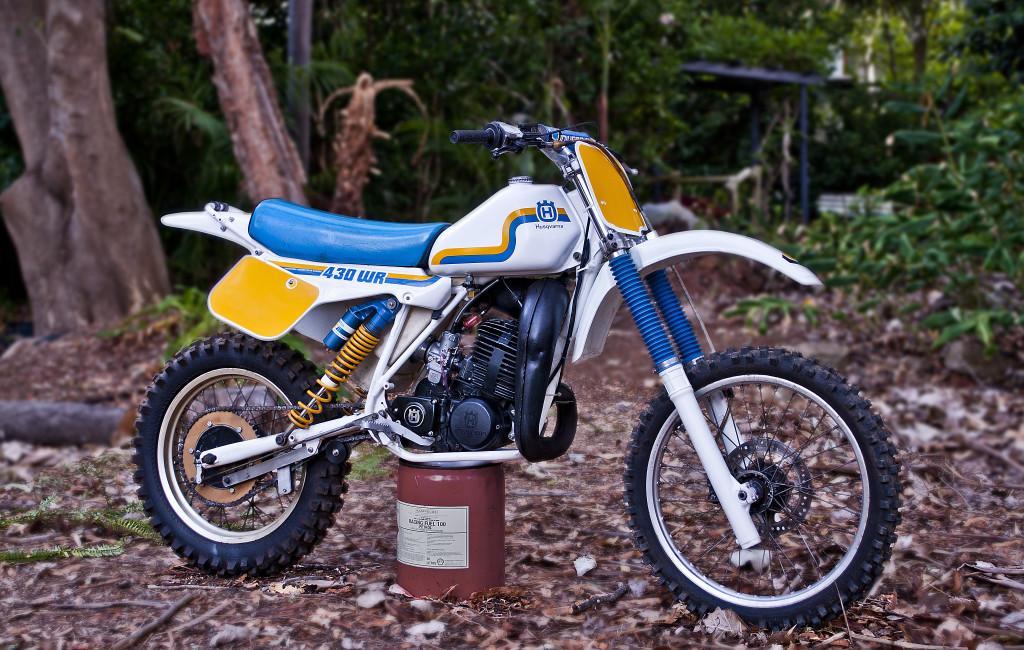 With a tall motor, long suspension and plenty of ground clearance, a tall seat height was inevitable.
With a tall motor, long suspension and plenty of ground clearance, a tall seat height was inevitable.
When I climbed aboard the Scrambler for the first time, the first bike that sprung to mind from the deep recesses of my old-bloke memory was my long-gone and often-missed 1983 Husqvarna WR430.
Sure, the Husky weighed (about 100kg) less than the Triumph, but the sit-up handlebar ergonomics, the soft bounce on the long dual Ohlins shocks, the lo-o-ng stretch to the ground and, probably, the sight of that sexy white fuel tank just north of my goolies made the memory of my old Husky just a blink away. (Gee, it was a great bike. Read about it here.)
Rocking the big Scrambler left to right and bouncing on the forks confirmed the obvious — at 207kg dry, it’s a big piece of kit.
Fire it up and it sounds throaty and authoritative in a lumpy, old-school thumpa-thumpa kinda way, rather than the jet-engine no-flywheel vroom-vroom of most modern bikes.
When you pull away from the carpark and head onto the road, it feels like a big dirt bike.
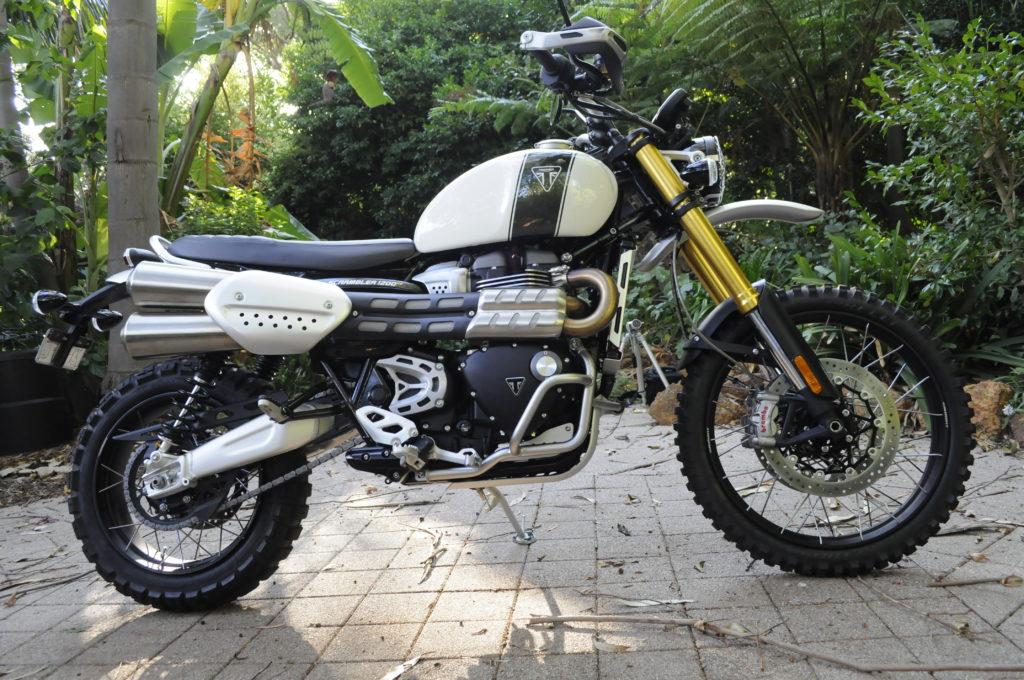
How’s the engine?
At it’s heart, the engine is the same mill that powers Triumph’s Thruxton cafe racer — so it’s low revving and muscular like a big single (okay, or a big twin), and is capable of scooting through the gears at a very decent pace. You’re not going to catch your mate on his Speed Triple through the twisty bits, but you will enjoy trying. (Watch those knobby tyres though …)
The fuelling is good, the engine feels steady, and there was no misbehaviour at start-up, idle, cruising, or full-fang.
On the highway, it has power to burn for overtaking or for hooning. At one stage (in carefully controlled conditions on private property with highly trained medical staff standing by), we topped 160kmh with The Pillion on the back. When I told her later that we’d momentarily cracked the old 100mph she said: “Really? I didn’t notice.” (You can see The Pillion report near the end of this article.)
In the bush, the motor was more than adequate — and I mean that literally. No-one needs 90 horsepower in the dirt, and nothing anyone says will ever convince me otherwise. My old WR430 and the KTM525SX I raced in motocross for a season or two both had more power than anyone could ever tame off-road, and they both had about half the power of the big Triumph. Of course, that’s not to say an abundance of power isn’t fun, because it most certainly is.
What about the gearing?
It’s road-bike gearing. Or maybe desert-bike, if you like.
There’s no escaping the fact that gearing which allows for competence when taking off from the traffic lights (a tall first gear) and when overtaking road trains on the open highway (tall again, and with reasonably close ratios) is not the sort of gearing that works in low-speed off-road conditions.
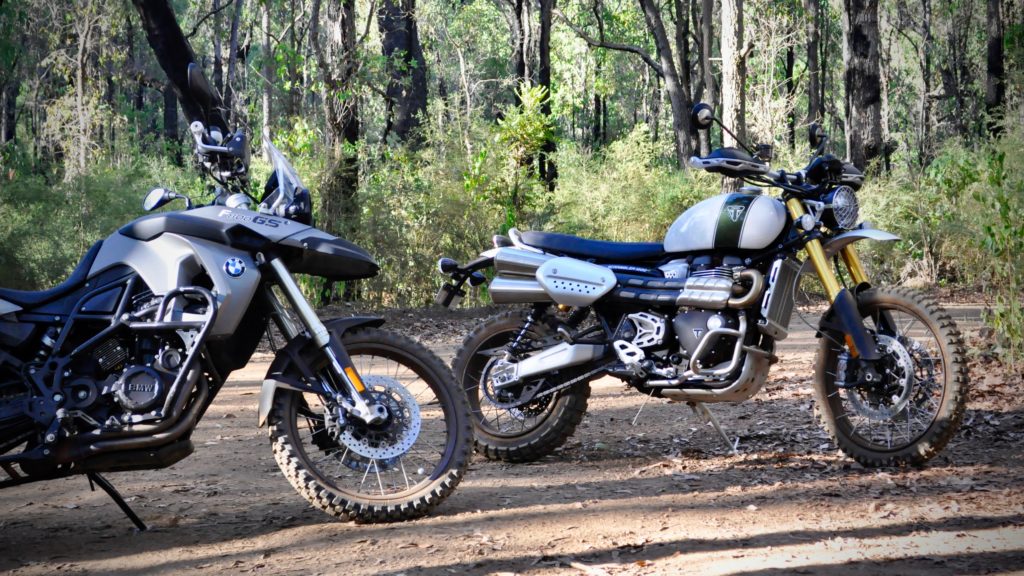
When we were manoeuvring the Scrambler down steep, rutted off-camber first-gear hills in the Mundaring pine forest, we found ourselves using the clutch and the brakes, rather than engine braking, to control speed and to retard run-away. That was a bit hairy, to be honest, because it meant concentrating some of our rare-enough brain cells and riding skills on clutch-and-brake duties when they were sorely needed for throttle, line-picking and steering duties. Toby Price probably wouldn’t bat an eyelid, but Toby Price we ain’t.
And while we’re on the gearbox, we should mention its operation — very slick. Gear changes were smooth up and down, and the clutch was light. Perfect.
So it’s no good in the dirt?
Did we say that? No, we didn’t say that.
It’s very good in the dirt; great, even, provided your flavour of dirt riding is not trying to pick your way through rocks or mud, or hauling it out of deep sand. (We did get ourselves stuck in sand at one stage down Dwellingup way, when a promising dirt track came to a sudden, narrow, sandy stop. We had no choice but to grab the bike by the scruff and man-handle it around to point back the way from which we came. We managed it, but it was hard yakka.)
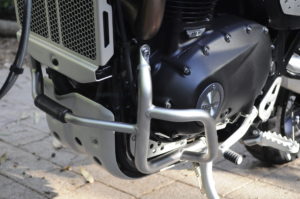
The point is, only a crazy loon would choose a 207kg twin with an 870mm seat height to play among rocks and mud and deep sand. And if you take a look at the specifications sheet for an ABS Honda CRF1000F Africa Twin — arguably the king of modern adventure bikes — you’ll find a weight of 232kg and a seat height of either 850mm or 870mm, depending how you have it set up. So while the Triumph is a big, tall bike, its specs are not out of line.
If your flavour of dirt riding is exploring access roads or open-country desert, you’ll be happy as a clam with this bike.
So it’s not a road bike then?
Well, this part is most odd. The Scrambler sits up tall, so you catch the wind in your chest, and there’s no fairing or windscreen to take the brunt. The tall seat means its a bit of a stretch to reach the ground at the lights and, when you do, you can’t help but notice the exhaust pipe wants to burn your left leg. And then there are the knobby tyres — our bike was fitted with an aggressive dirt-profile front tyre and a more regulation adventure-style on the back — so we weren’t inclined to go in search of any footpeg scraping in the corners.
But for all that, it was great fun. The wind in your chest was no big deal, even at highway speed, and we learned to lean the bike right-ward at the lights and park our right Sidi on the ground away from the pipe. We treated the tyres with caution, but the more miles we put on the road the less cautious we felt. We never tried to find the limits of the tyres, but they never gave us a fright either.
When we squirted from Kalamunda to Mundaring and back on our favourite stretch of bitumen, we found ourselves riding it like a big road bike. Braking late, leaning, powering out. And it handled it with aplomb. It was so much fun that we pondered going back and doing it again, but it was getting dark and Captain Corona was calling from the fridge.
It crossed our mind that this would be an awesome mega-motard if you fitted it with street rubber.
Tell us about the suspension
There was a time, when we were young and 50 seemed old, when full-on pro-level motocross bikes (does anyone else remember Gaston Rahier?) had only nine inches of wheel travel. The Triumph Scrambler has ten.
No, we didn’t take it onto a motocross track and we didn’t do any high-speed whoop-de-dos. And yes, we know length isn’t everything (fortunately for us).
But we did pick up some pace on dirt tracks with a few unexpected ruts that made us tighten our orifices in anticipation of pain and misery. The pain and misery did not arrive. In fact, the ruts were handled easy as pie, so we didn’t even slow down. The suspension is very good, on road and off. (And don’t swallow that nonsense about twin-shock rear suspension being second rate. Two shocks are absolutely fine, whether you’re a newbie or an old pro.)
And the brakes?
Twin 320mm Brembos, on a 90-horsepower adventure bike? It’s overkill. These brakes could haul up a Ducati Panigale on a racetrack. They have no trouble at all slowing down the Scrambler. Overkill. But brilliant.
Lots of high-techery too?
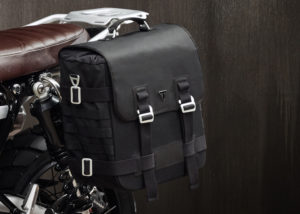
Yes, there’s lots of high-techery. There’s ABS brakes, lean-sensitive traction control, five riding modes, Go-Pro and navigation integration with your way-too-smart phone, one-touch cruise control, heated grips, back-lit switch blocks, and a front headlight that looks old fashioned but lights up the night like, well, like a right proper headlight.
We didn’t like the standard off-road mode, because when we stomp on the brakes in the dirt we expect the wheels to lock up, so when we left the bitumen we switched to off-road pro. And when we came back onto the bitumen, we switched to sport mode because we’re not too proud to accept that ABS and traction control are brilliant technology that can save our butts three times a day without even telling us (and ‘Sport’ sounded like it would be fun).
So what’s the verdict?
The Triumph Scrambler 1200XE really is something special.
It’s a blast on the road, it’s a blast in the bush, it’s fun on the highway, and it’ll even manage a pillion (with a caveat). We would happily ride one from Perth to Cairns and back, exploring every backroad we could find.
We would love to have one in the shed, and we reckon we would put more miles on it than any bike we’ve ever owned.
The Pillion Report
By The Missus
I didn’t like the look of those footpegs; they looked a long way off the ground. I didn’t like the look of that thin seat; just an inch or inch-and-a-half thick. And I really really didn’t like the look of that exhaust pipe. Peter’s invitation of a weekend away sounded nice at first mention — last time we had an Indian Chief and it was marvellous — but it was rapidly losing its appeal as I inspected the pillion accommodations fitted to the Triumph Scrambler.
A quick blast around the block confirmed my trepidation about the thickness of the seat. Nope, I’m not keen about going pillion from Perth to Dwellingup and back unless we can do something about the seat.
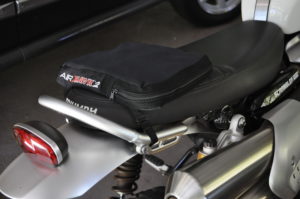
And we did. An AirHawk2 seat pad found its way underneath me, and I was willing (if not enthusiastic) to spend a few hours on the back of the Scrambler.
But a funny thing happened on the way to the forest. The Scrambler was fine. Completely fine. The high pegs weren’t actually that high once I got used to them, I hung onto Peter (just like I do on most rides anyway), the seating position was good, my legs were neither cramped nor stretched, the exhaust was warm but no great drama, and the AirHawk was brilliant in the bum-protection department.
When we arrived at the Blue Wren cafe and Peter asked me how it was, I said: “Fine. To be honest, I felt like I could have been on the Guzzi.”
TRIUMPH SCRAMBLER 1200XE
SPECIFICATIONS
| ENGINE & TRANSMISSION | |
|---|---|
| Type | Liquid-cooled, 8 valve, SOHC, 270° crank angle parallel-twin |
| Capacity | 1200 cc |
| Bore | 97.6 mm |
| Stroke | 80 mm |
| Compression | 11 :1 |
| Max Power EC | 90PS/ 89bhp (66.2kW) @7,400rpm |
| Max Torque EC | 110 Nm @ 3950 rpm |
| System | Multipoint sequential electronic fuel injection |
| Exhaust | Brushed 2 into 2 exhaust system with brushed high level silencers |
| Final Drive | X ring chain |
| Clutch | Wet, multi-plate assist clutch |
| Gearbox | 6-speed |
| CHASSIS | |
| Frame | Tubular steel with aluminium cradle |
| Swingarm | Twin-sided, aluminium |
| Front Wheel | Tubeless 36-spoke 21 x 2.15in, aluminium rims |
| Rear Wheel | Tubeless 32-spoke 17 x 4.25in, aluminium rims |
| Front Tyre | 90/90-21 |
| Rear Tyre | 150/70 R17 |
| Front Suspension | Showa 47mm fully adjustable upside down forks, 250mm travel |
| Rear Suspension | Fully adjustable Ohlins twin shocks with piggy back reservoir, 250mm rear wheel travel |
| Front Brakes | Twin 320mm Brembo discs, Brembo M50 4-piston radial monobloc calipers, ABS |
| Rear Brakes | Single 255mm disc, Brembo 2-piston floating caliper, ABS |
| Instrument Display and Functions | TFT multifunctional instrument pack with digital speedometer, trip computer, digital tachometer, gear position indicator, fuel gauge, service indicator, clock and rider modes (Rain/Road/Sport/Off-road/Rider-Customisable) |
| DIMENSIONS & WEIGHTS | |
| Width Handlebars | 905 mm |
| Height Without Mirror | 1250 mm |
| Seat Height | 870 mm |
| Wheelbase | 1570 mm |
| Rake | 26.9 º |
| Trail | 129.2 mm |
| Dry Weight | 207kg kg |
| Tank Capacity | 16 L |
| FUEL CONSUMPTION | |
| Fuel Consumption | 4.9 l/100km (58 MPG) |
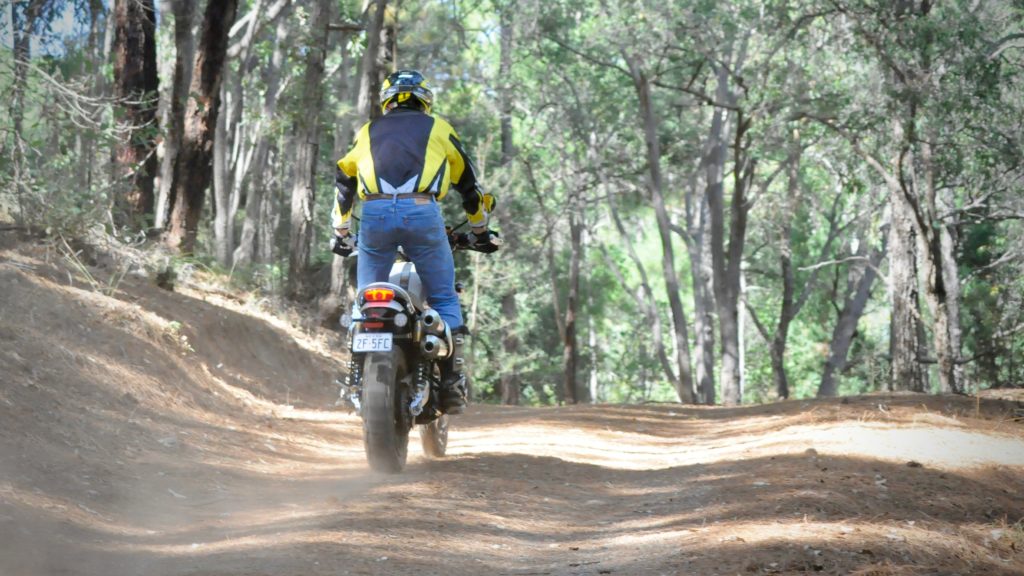

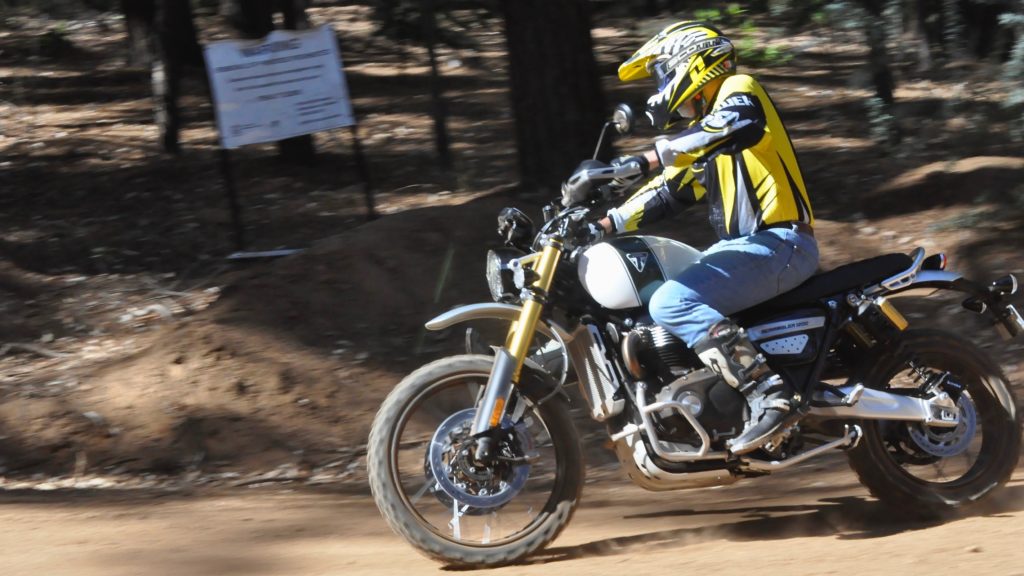
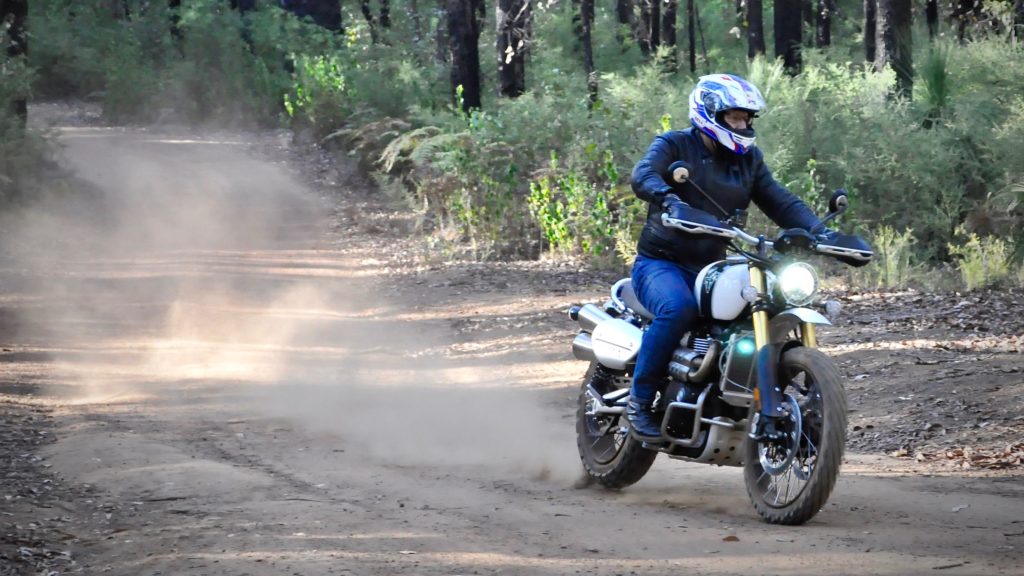
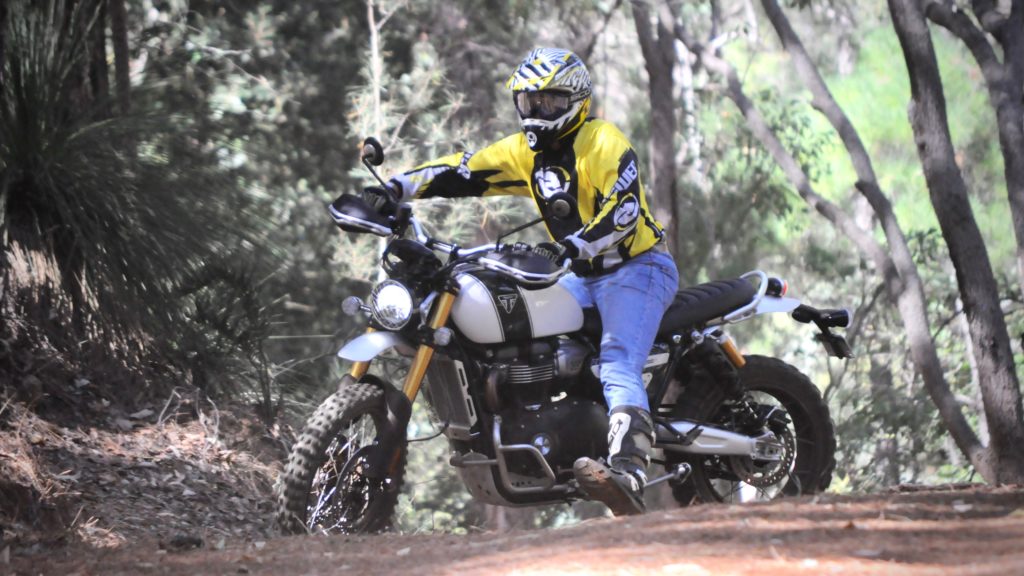

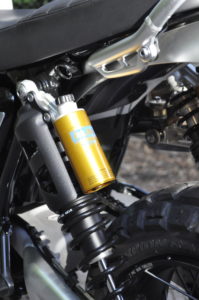
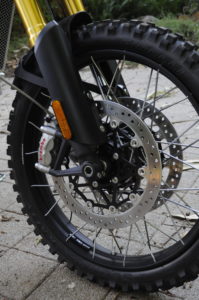
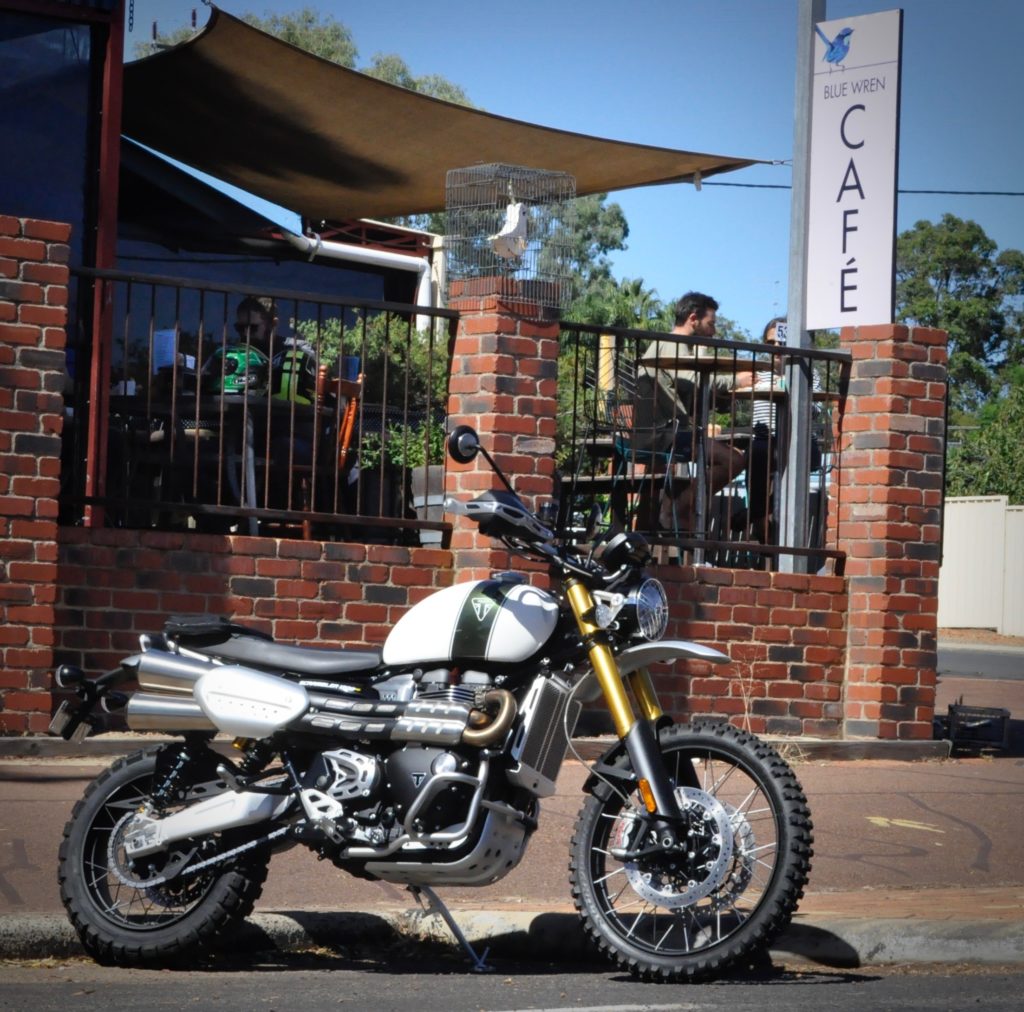
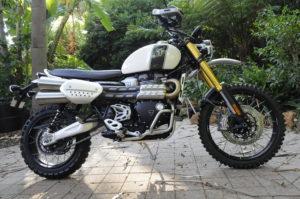



You forgot to mention that you couldn’t get the fuel cap open.